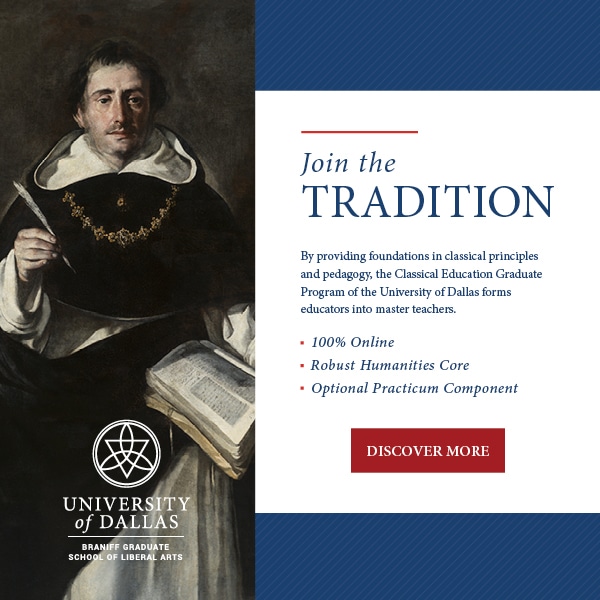What is an Appeal? What is a Fallacy?

This post is the next in a series on teaching the art of rhetoric.
Now that we have an understanding of what rhetoric is and the specific means by which it functions (the three modes of persuasion), we can now turn to the various types of appeals that can be made using different combinations of the three modes.
Simply put, appeals are reasons given for doing or not doing something. In our post on “What is Rhetoric,” we saw that rhetoric is inherently an ethical art in that it is primarily concerned with moving people toward the Good and the True. It is not interested in persuasion (or enchantment) for the sake of personal gain (which is sophistry), but rather for the sake of moving the audience closer to Goodness itself—both individually and corporately. An appeal, then, is some combination of the three modes of persuasion that tries to give reasons why a particular action should or shouldn’t be taken—and this can go from trivial things like what to eat for breakfast, to large things like a political decision to go to war. To simplify our confusing task of understanding these subtle, various appeals that use different mixtures of the three modes, we can try to isolate the primary mode that is being appealed to as a reason for doing or not doing something. Therefore, most of the appeals that we are going to study can be broken down into the following form in order to help identify examples that might otherwise be overwhelming and confusing.
Appeal Name: When (some subcategory of ethos, pathos, or logos) is used as a reason for doing or not doing something.
For example: “ad hominem” appeal: When a person’s (or thing’s) particular character is used as a reason for doing or not doing something.
We can use the above form to generate and invent examples of events where we can see this appeal incarnated in the physical world, or conversely, we can reverse engineer examples that we find in the world where people are choosing to do things for various reasons by translating the above into a question: In this particular example, what is being used as a reason for doing or not doing something? This will help us to weed out any confusing elements and focus in on the particular mode that is being used to try and persuade. This is important because we need to be able to correctly identify what appeal is being primarily used before we can step back and judge whether or not it is an appropriate appeal to use. Because language is incredibly complex and subtle, and because we are blind to much of what is obvious, it is necessary first to be sure that we have understood what precisely is being used as a motive for action; if we misunderstand what appeal is being made, we won’t be able to clearly evaluate and measure it.
It is very important to also realize that every idea communicated will have two components that need to be examined: their content and their form. For our purposes, content is the “what is being communicated,” and the form is the “how it is being communicated.” This subtle distinction is absolutely crucial to begin noticing because it is in this combination of form and content that meaning emerges. If we were to write it in an equation, we could say that
Content + Form = Meaning
Many people pay more attention to the content and ignore or miss the significance of the form (or sometimes the opposite!), but it is the interplay between these two where meaning takes shape. For example, consider two examples in which a wife calls her husband’s name (the content—the “what is being said”) across the house. In the first example, imagine her tone of voice (the form—the “how it is being said”) being gentle, lilting, with a hint of playfulness. Now imagine another example where her tone of voice is desperate, scared, and panicked. The husband across the house who hears his name called hears the same content in each one, but the form that it is delivered in completely changes and informs the meaning of each utterance. Many musical examples show this forth in a striking way: the meaning of a saccharine-sweet pop song can be transformed by another artist covering the song which alters the form and so produces an utterly different meaning; a happy, upbeat song written in a major key is transformed by dropping it down to a minor key. Sarcasm itself can be understood as a deliberate mutilation of the connection between form and content so as to create humor or reveal absurdity. So, all communications of meaning can be understood as an interplay between form and content. This will be helpful to keep in mind as we examine particular examples because missing one-half of what creates meaning will cripple our ability to judge well.
Someone once said, “An excuse is the skin of a reason stuffed with a lie.” In other words, an excuse is bad content put into a good form. This distinction between the form and the content of an utterance is a helpful way of picturing the difference between appropriate appeals and inappropriate appeals (fallacies): an appeal is a good form stuffed with good content, and a fallacy is a good form stuffed with bad content. But notice this important point: the fault comes not through the form, but through the content. And herein lies our big problem:
Most teachers of fallacies end up teaching their students that the forms themselves are fallacious, blissfully ignorant of the fact that they put those same forms of appeals to good use all the time; and because students have not been trained to first see the forms in their multitude of daily uses, they are not sharp enough to point out to their teacher that they are using the very forms that they are claiming as fallacious (the form of simplification). Because the valid and appropriate use of the three modes of persuasion is not taught first, teachers jump straight to teaching their students perversions of those valid forms without ever teaching them that there is an appropriate use of those forms. We teach fallacies backwards, and so what students learn is a half-true understanding of the forms that then becomes a baseball bat with which to attack people. I cannot tell you how many times I have had students try, for example, to bring up the fallacy of “chronological snobbery” ANY time that an appeal to “time” is made. It is not their fault; they have not been taught there that is a good and right use of the three modes of persuasion, and it is only by understanding their appropriate use can we then step back and recognize deviations and perversions from those good forms—and so identify fallacies. When bank tellers are being trained in how to avoid taking counterfeit money, they are not trained by studying various types of counterfeit money—they are trained by studying genuine, authentic bills which teach them how to recognize deviations from that original form. Rhetorically speaking, we should follow the same pattern.
Ethically speaking, all evil is a perverted good that arrogantly and selfishly isolates or elevates some good thing to a degree that causes it to become corrupted and bad. Almost any evil action you can name in the world does, if you dig down deep enough, have some good that the person is trying to obtain—but through the wrong means. A man who embezzles from his company does so not for the joy of stealing, but because of the financial and material security it will bring to him and his family. A man who becomes addicted to heroin is perhaps pursuing peace and pleasure (neither of which are bad things in and of themselves) but in an unhealthy, problematic way. A man who consumes pornography is seeking beauty—but in a perverted, voyeuristic manner. Technically speaking, there are only good things in this world, but good things gone after in a bad (selfish) way produce the millennia of greed, cruelty, and war that history can show us. Even genocidal tyrants think that what they are doing is good (often appealing to things like purity and national prosperity—both good things but pursued in a monstrous way).
Another related idea that might be helpful here is to point out that all arguments and disagreements are actually disputes about which transcendent good ought to be used as a guide in a particular situation, though we may often demonize our opponents or those who disagree with us as being stupid, evil, and devoid of any sense. An impartial judge can often step back and see that both sides are actually pursuing good ideals, they simply disagree over which ideal ought to take precedence in that particular case. For example, Republicans in America are known as conservative, as they tend to care about the past and the preservation of good things in our country; Democrats are known as progressive, as they tend to care more about the future and the development of good to come. Neither of these ideals is inherently bad, and I don’t think either side could deny that the other side’s goals are utterly devoid of any goodness. They disagree on which perspective should take precedence. However, notice that they are both promoting a good ideal. All arguments, even two toddlers fighting over who gets to use a toy, can and should be seen as competing attempts to pursue the Good Life. As humans, we only pursue good things—but due to our ignorance and pride, that pursuit can lead us into a terrifying darkness of hate and violence.
So, with the three modes of persuasion, there are only good appeals (ethical, pathetic, and logical), and there is nothing inherently wrong with those forms; on the contrary, they are tools of inestimable value! But those good forms can be stuffed with deceptive, manipulative, selfish content—and THAT is how you can identify an appeal as being fallacious. There is an ethical, subjective judgment that must be made to determine whether an appeal is appropriate or not. There is no formula or list that can tell you if an argument is fallacious. In other words, you cannot judge an appeal based on its form alone. Unfortunately, I walked out of all of my logic classes in high school thinking quite the opposite, and I see droves of people carrying the same misunderstanding. Being able to correctly distinguish between appropriate and inappropriate uses of the three modes can bring much clarity to the already confusing process that is communication.
With all our background definitions and context out of the way, we can now (finally!) begin looking at particular appeals being used in action! Next time, our first appeal study: appeals “to the man!”
Joshua Leland
Josh Leland is a humanities teacher at Covenant Classical School in Concord, NC. He earned his BA and MA in English from the University of North Carolina at Charlotte. He and his wife, Rebekah, also a teacher, and their five children, Ransom, Calvin, Alethea, Mary, and Olga live in Charlotte, NC. [Editor's note: He's also quite a good poet].











